Here are some brief observations I made on Napoli, in a recent game against Inter.

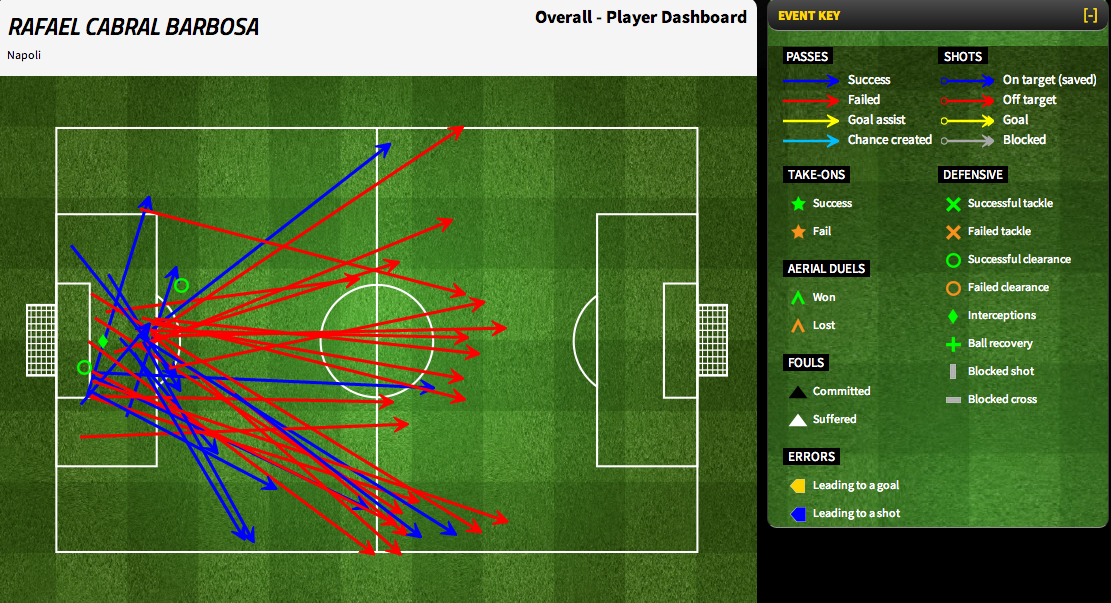


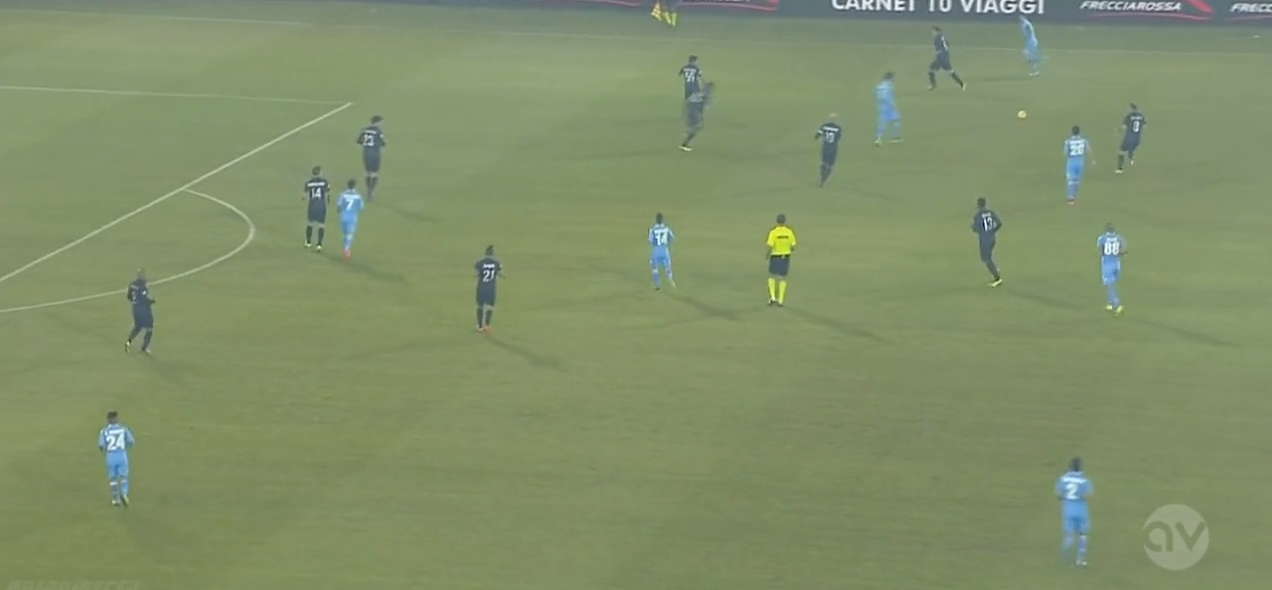
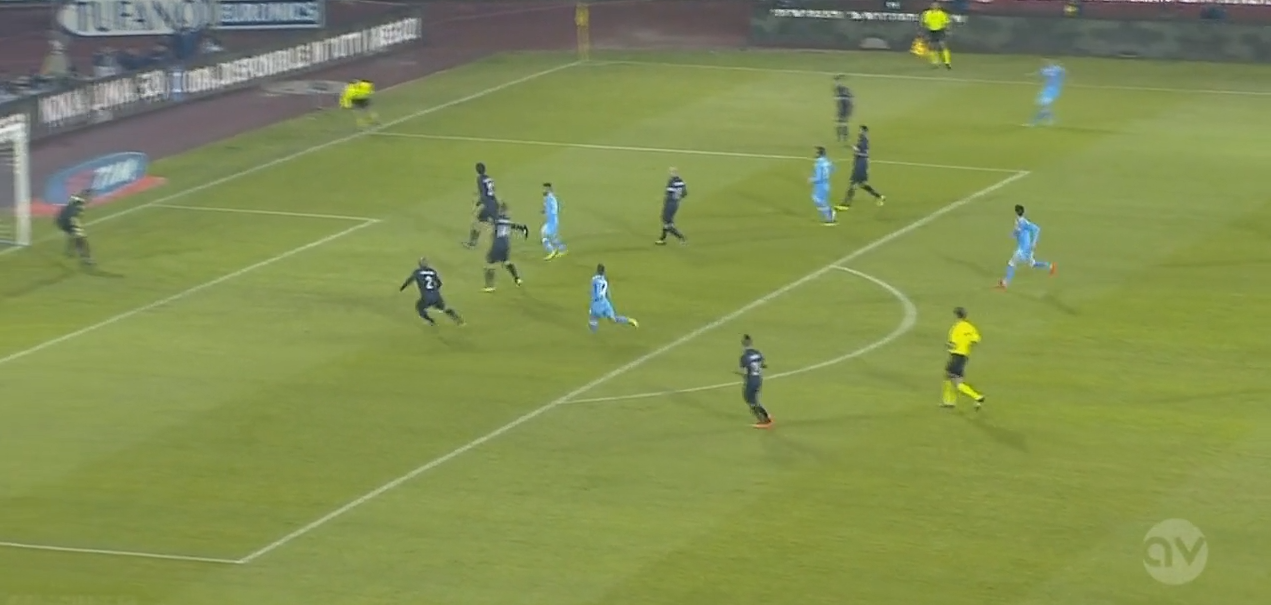
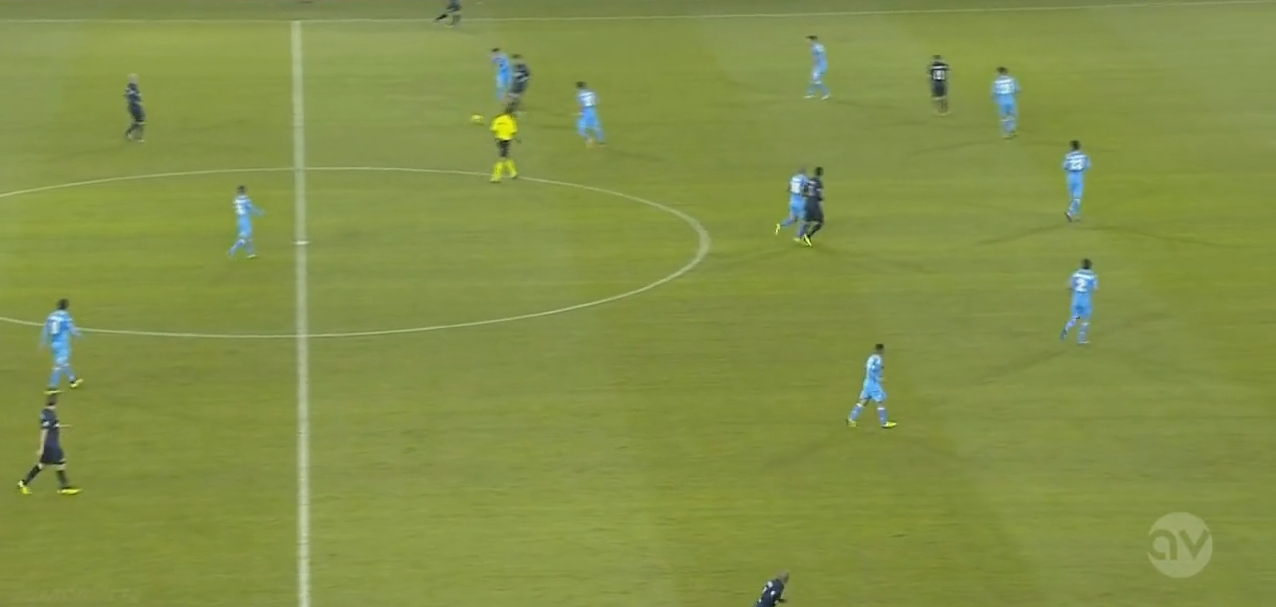



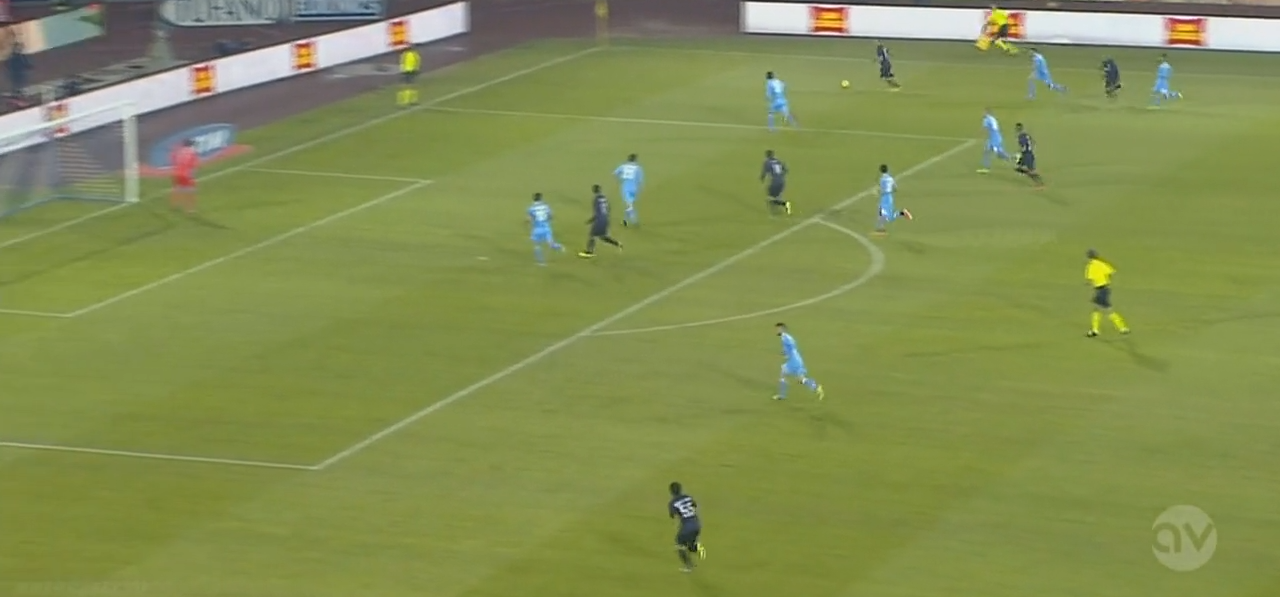
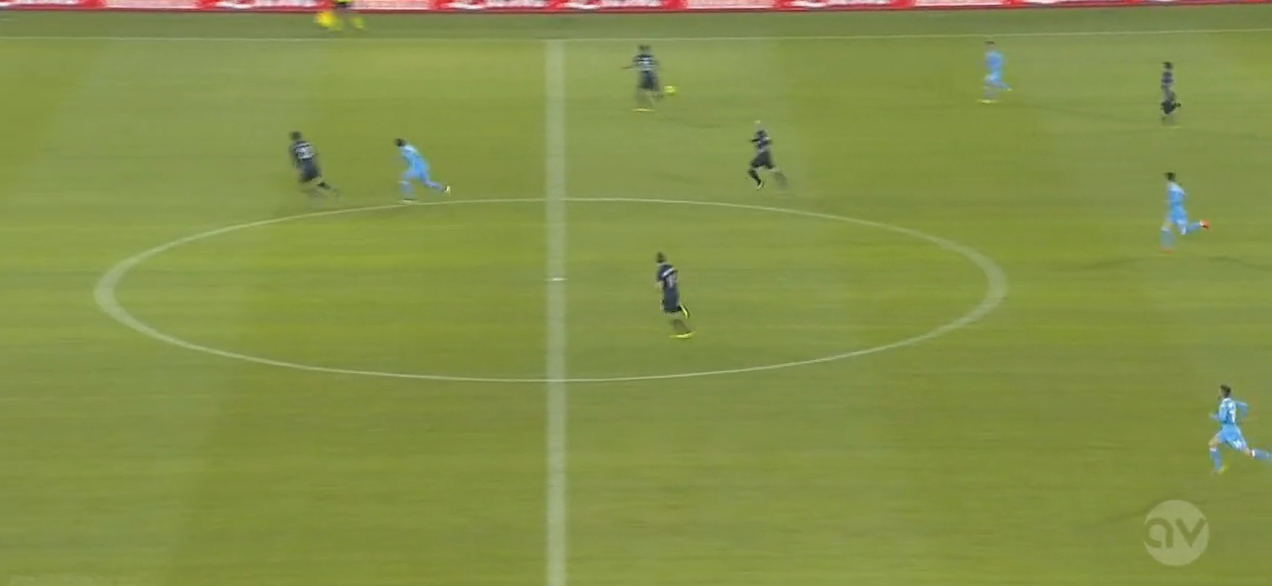



Offensive organisation
Rotations of the front 4 positions to give opponents different challenges when defending, look to keep and circulate ball in deep areas to control game and rhythm [main strength of the team - press high to block short build up.] This is to stretch the opponent's lines vertically in order to create space in between lines for them to find vertical passes to the front 4 [coming deep - receive to feet.]
Phase 1 - Team build up short in a 343 - fullbacks on second line with Inler moving between centre backs and Dezemaili moving up to the 2nd line. With Mertins playing off the striker, he will move to the other side of Dezemaili [slightly higher - 3rd line on his own] to create a midfield triangle upon Inlers movement [forward to the 6 position & back in between the centre backs]. As both central midfielders [Dezemaili/Inler] are non positional, they will rotate who stays back and who goes forward.
Long build up a result of not being able to build up short - played more often to the centre/right with the tallest players in these areas (tallest offensive player Pandev at 1.85m, rest of long options 1.84m or below). Team move up and look to condense space around the area of the 1st ball in order to try and win the 2nd ball.
Phase 2 - Dezemaili will be joined by Inler, to create 2431 [fullbacks on second line] & also move forward, with rotation of triangle shape [Dezemaili/Inler movements forward, number 10 coming deep]. Use ball circulation & look for the front 4 move deep [in between lines or depth] to find vertical passes to progress.
Space created between lines [circulating ball in deep areas] to then play vertical pass.
Phase 3 - Retain shape from previous phase. Fullbacks will overlap upon the inside movements/depth runs from wide players - allows them to retain balance. Rotation of the front 4’s position - image below shows no right winger as Callejon have moved inside and Higuain is in an inside right position [to create space on the right for Maggio to play 1-2 pass].
Phase 4 - Opposite winger joins to attack from 2nd post, with the striker and number 10 in the middle. A Central midfielder will also join the edge of the box.
Defensive organisation
Front 4 players will rotate positions to share defensive work. Team look to play collective and slow the rhythm of the game down in order to control. Front players can be aggressive with their pressing upon a pressing trigger in phase 1 & 2, otherwise the teams mentality isn’t very aggressive. Important to control rhythm of the game, be aggressive, direct and attack wide areas [as their centre backs cover the fullbacks - can’t do it every time.]
Phase 1 - don’t look to press often, only usually upon a trigger. Look to stay compact in a 442 - medium, tight block - using zonal marking and look to play offside [high line]. By staying compact, they allow opponents to move into 2nd phase build up.
In their 2nd phase defensive organisation, they look to show teams down the sides [tight block] by leaving the zones free. This is in order to use their pressing trap, where they will then move the block to the side in order to flood the wide zones and recover the ball in wide areas.
Block moving to the side in order to win ball in wide areas, flooding wide zones.
Tackling statistics below show high amount of ball won in deep, wide areas.
Phase 3 defending in a 4411 - low block. The 10 will sit on the 6 in order to pressure and not allow to dictate rhythm of game. No longer look to play offside.
Phase 4 - often defend phase 4 [box movements from the opposition] with 2 of their back 4 in the box, as the centre backs sill cover their fullbacks and defend big spaces - rather than staying inside and using the central midfielders to cover the fullbacks. This means that one central midfielder will look to move into the zone left by the centre back moving outside [see image]. This often leaves them vulnerable to 2nd post crosses.
Offensive transitions
Will always look to counter attack when given the opportunity, through the front 4 (usually 1v1) with depth running and diagonal switches upon delay. This leaves 6 outfield players behind the ball to retain balance - late support from a central midfielder.
Defensive transitions
Different mentality depending on situation. They will look for a good reaction (pressing to regain) when possession is lost, but are okay with dropping back to a low block in order to counter attack with more space. Back 4 with two central midfielders always back. Wide players may get back to create two lines of 4, but will sometimes stay high in anticipation of a counter attack upon regaining possession.
Offensive corners
5 in the box and two outside of the box, leaving two players on the halfway line.
Defensive corners
Mixture of zone and man to man marking structure - 2 zonal players in front of 1st post area & one player short, rest man mark. If the corner is taken short, there is one out already & one of the two zonal players in front of the 1st post will move to create numerical equality (2v2) to try and prevent cross. One player left on the halfway line.
Comments
Post a Comment